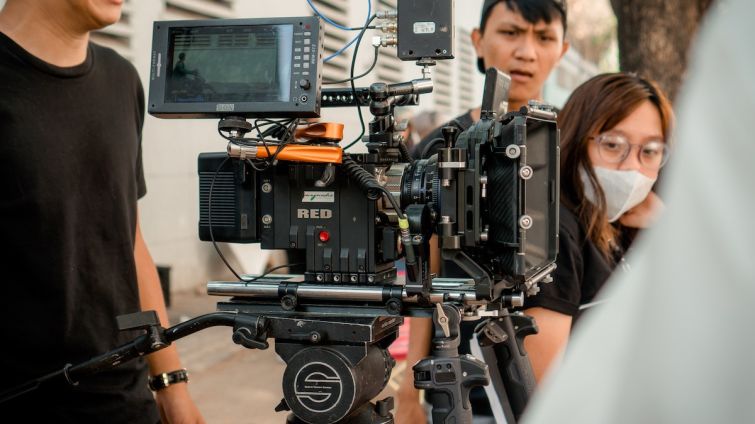Reel Rebound: Filming Set to Return to Hollywood
L.A. County officials: Film production can begin the reopening process this Friday
By Greg Cornfield June 10, 2020 6:05 pm
reprints
Hollywood loves a comeback story.
Los Angeles County officials announced today that film, television and streaming service producers can begin the process of reopening as soon as Friday.
Filming and production have been devastated and put on hold like most other sectors since the coronavirus outbreak and subsequent shelter-in-place orders were enacted. The industry’s return could be a catalyst to Southern California’s rebound, bringing back hundreds of thousands of jobs.
“The region’s creative industries comprise 15 percent of the area’s employment base, and the three-month filming hiatus has created immense pent-up demand for production space as the appetite for content remains high across platforms,” said Eric Willett, CBRE (CBRE)’s regional director of research, in an email to Commercial Observer.
CBRE’s executive vice president Craig Peters said the announcement to allow production to restart is “huge,” as the entertainment industry is “one of the primary drivers of Southern California’s economy.”
“This will be a much needed boost,” he said.
Sam Nicassio, president of L.A. Center Studios, told CO that he has had more discussions in the last week with production companies about returning since state officials announced last week that most counties could move forward with filming.
“The dates where there will be actual filming are towards the end of July, at the earliest,” he said.
Peters also said that CBRE has had a number of studio operators and production companies “touring the market and looking for buildings ready for occupancy.”
“Pent-Up Demand”
Studio executives are more than eager for filming to restart, as they were already operating at full capacity prior to the outbreak. Nicassio said L.A. Center Studios’ occupancy rate was over 100 percent last year, in which they had to open some weekends. The bottleneck in production started building ahead of shelter-in-place orders, caused largely by the expanding streaming service platforms.
Now, the pandemic has caused a backlog in production like never before.
“There’s a lot of pent-up demand. If a show needs to catch up, or if a show needs to come in on the weekends, we’re absolutely open and available,” Nicassio said. “It’s just the way the industry has evolved from the old days, of the typical format with a ‘pilot,’ and 22 episodes. So now all the streaming media comes in with five-episode orders, eight-episode orders, ten-episode orders — so it’s a different schedule, and there’s just so much demand for content.”
Executives with Hudson Pacific Properties — one of the largest operators of studio space in L.A. — have said they expect most studios to expand their schedules to seven-day per week. Representatives with Hudson declined to comment for this article.
“Our team has been reached out to by virtually every production company saying ‘we need office space and we need studio space,’” said Victor Coleman, the firm’s CEO, during Hudson’s earnings call in May. “The demand is going to be voracious.”
$afety First
To continue reducing the spread of coronavirus, the state stipulates that productions, cast, crew and other industry workers should abide by safety protocols from labor and management.
Earlier this month, industry leaders, union heads, and policymakers submitted industry-wide, labor-management safety guidelines to the state. They are expected to significantly change traditional or routine filming practices, and create a “new normal” that will redefine set operations.
As such, filming throughout the state is expected to face slower production and increasing cost. Precautions include limiting or restricting live audiences, daily testing and screening, staggering calls and shoots, eliminating buffet-style meals, and strict sanitation protocols.
“I think it’s probably going to increase the cost of production, and it’s going to increase the length of these shows and how they get made,” Nicassio said. “Whether it’s staggered lunch schedules, an extra safety person, having less people on set each day, shorter hours … And if it’s some combination of all those, I don’t know how they’re going to do it for less money.”
According to media reports, JP Morgan analyst Alexia Quadrani, estimated last week that shooting costs could increase by 10-to-20 percent per day due to new protocols.
Nicassio said his team put together their own roadmap to get people back to work and to show tenants and producers what they’re doing to address safety concerns.
“We’re up and running. We’re ready for them.” Nicassio said. “I think it’s about them setting up the right safety standards and protocols before anybody is going to come into an environment where you may have 100-150 people in an enclosed space for a long day.”


